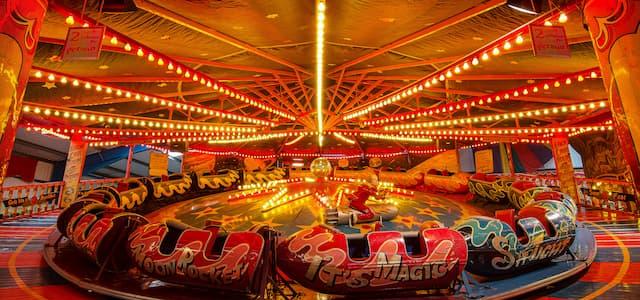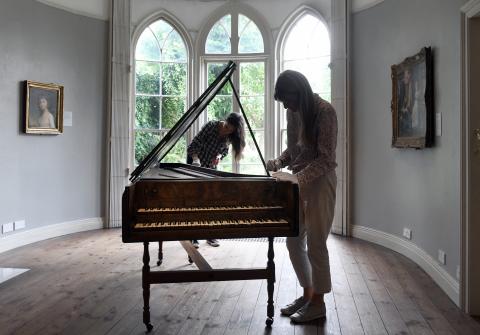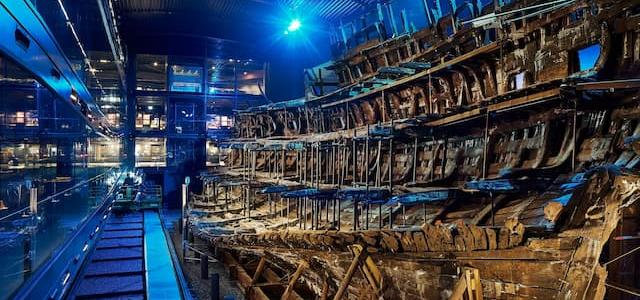
Gainsborough’s House saves a rare English harpsichord for the nation
Gainsborough’s House, Thomas Gainsborough’s childhood home, has acquired a rare 18th century English harpsichord for £91,000, saving this important musical instrument for the nation.

The Joseph Mahoon (fl. 1729 – 1771; d.1773) double-manual harpsichord, is significant because it is the only one of its type known to exist, and one of only two surviving instruments from the 1730s. This is particularly important as it was made when London was at the forefront of instrument-making among the major cities of Europe.
The keyboard, made in London in 1738, was blocked from export by the Department for Digital, Culture, Media and Sport in early 2019 to provide an opportunity to keep it in the country. The ban gave enough time for Gainsborough’s House to step in and save the instrument with the help of generous funding from the National Heritage Memorial Fund, Art Fund and the V&A Purchase Fund. The harpsichord will go on display to the public at the Gainsborough’s House from Wednesday 4 September.
Exeter-born Joseph Mahoon became a renowned spinet and harpsichord maker, and was appointed as ‘Harpsichord Maker to His Majestie’, King George II, in 1729. While Mahoon is estimated to have been making instruments for more than 40 years, only two harpsichords and about a dozen spinets bearing his name have survived. The only other remaining British harpsichords dated between 1730 and 1739 are also those by him. However, as the only surviving double-manual harpsichord, the keyboard is unique and of outstanding significance.
Mahoon was well-known for luxurious harpsichords. A famous print by his contemporary, William Hogarth, in ‘The Rake’s Progress’ series, depicts Handel playing a harpsichord by Mahoon, while accompanying the Bolognese castrato singer, Carlo Farinelli. Given that this may have been a concert instrument, it is not impossible that the great composer may have performed on the keyboard in question. This is a considerable rarity redolent of a high point in British musical life.
Sir Peter Luff, Chair of the NHMF, said: “This distinctive harpsichord acts as a doorway not only to the world of 18th century music, but to that of culture and affluent social circles of the era. The National Heritage Memorial Fund has made its mission to save the UK’s most precious heritage at risk and, as such, I am delighted that this one-of-a-kind instrument has now been secured for the enjoyment of generations to come.”
Arts Minister Rebecca Pow said: “The export bar system exists so we can keep items of national importance in the country. I am delighted that Gainsborough’s House has been able to acquire this unique 18th century harpsichord so it can be enjoyed by members of the public. Instruments from this period are incredibly rare and this helps tell the history of musical performance in the UK."
Mark Bills, Director of Gainsborough’s House, commented: ‘This acquisition not only saves for the nation an important cultural object from the age of Gainsborough, but provides a centrepiece for the artist’s childhood home and the focus for the exploration of the musical world that he was so passionate about.’
Local MP for South Suffolk, James Cartlidge, said: “I was pleased to hear that this historic harpsichord will remain on British soil, given its artistic significance. I also welcome Gainsborough’s House role in retaining the instrument and it underlines how the museum is growing as a cultural asset”.
Sarah Philp, Director of Programme and Policy, said: “Art Fund is proud to help Gainsborough’s House to buy Mahoon’s harpsichord. This rare and important object will help to reveal another aspect of Gainsborough’s artistic life and remind us of some of the ways in which visual art and music are intrinsically linked.”
Gainsborough had a deep passion for music. He counted many musicians amongst his closest friends, and he was a passionate amateur musician owning and playing many musical instruments, including five viola da gambas. The harpsichord will be on display from 4 September until the House closes on 27 October for major renovations and a 500 square metre gallery extension. It will re-open in Summer 2021 as the National Centre for Gainsborough. The harpsichord will be a central feature of the new displays in an historic room that explores Gainsborough and music.

